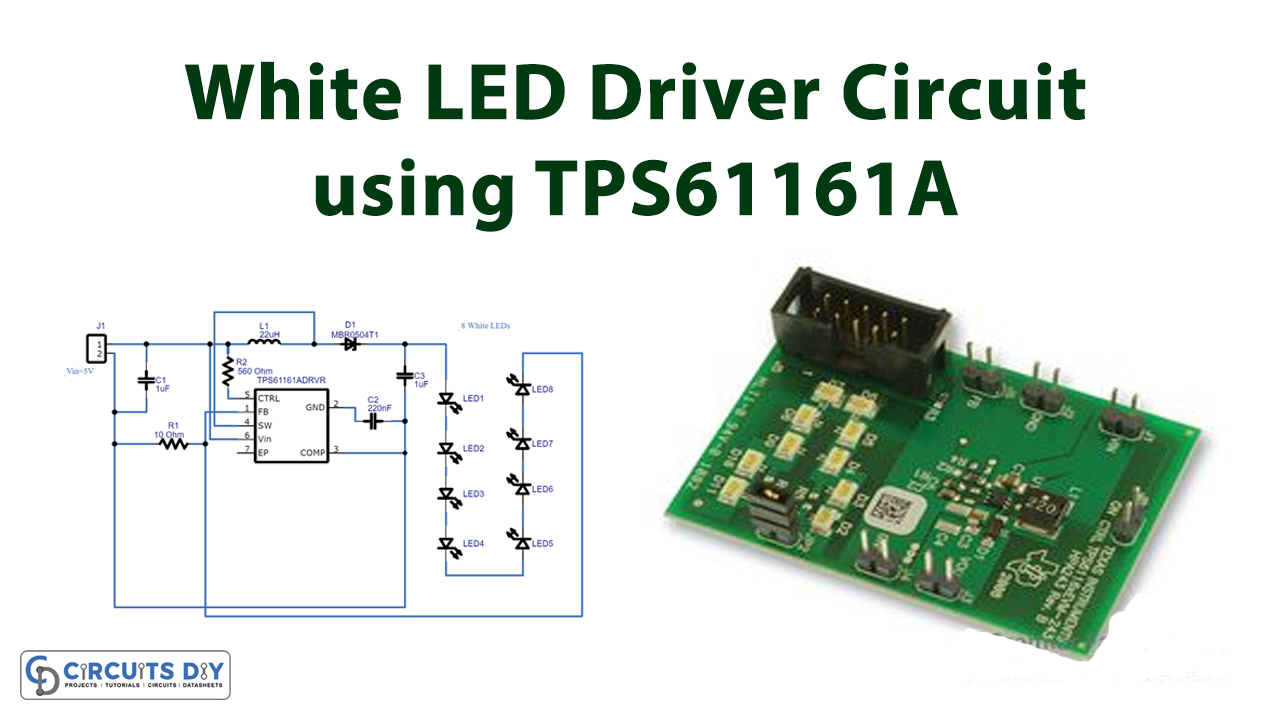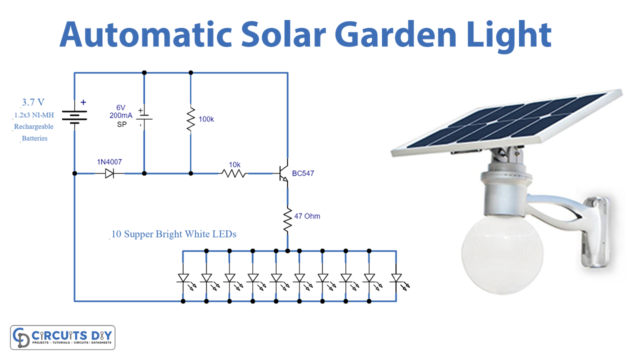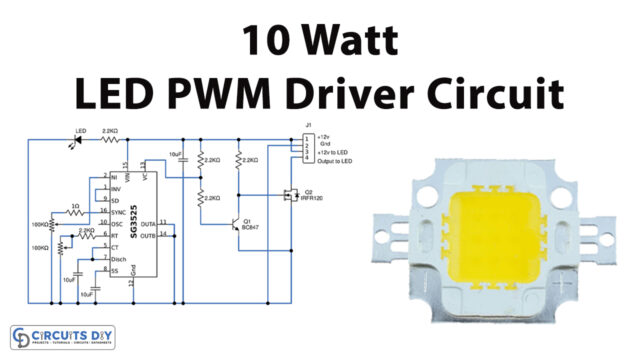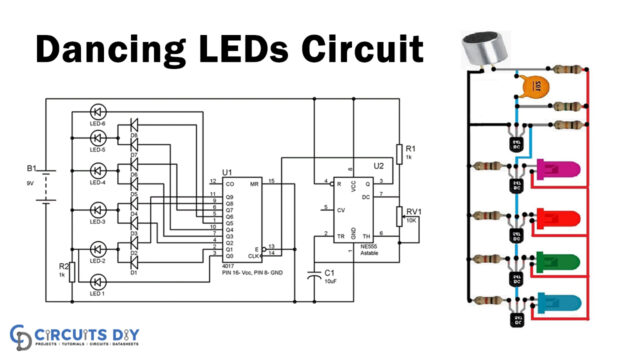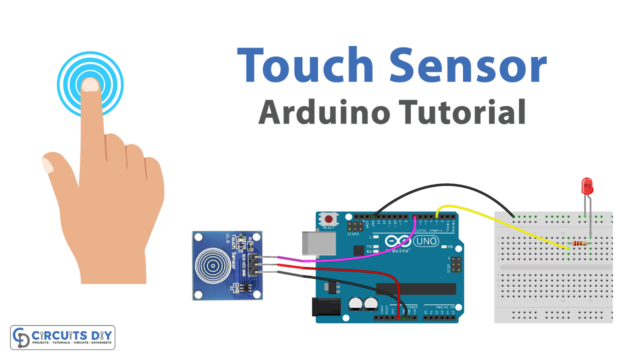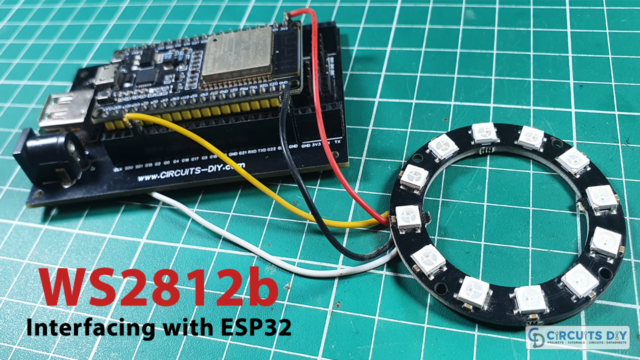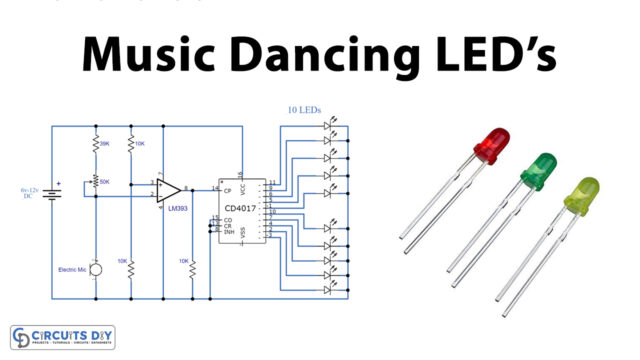Introduction
Light-emitting diode (LED) is widely used in electronic circuits and devices. But, in past, they are usually utilized as indicators or in display applications. But with the advancement of white LED, they are now employed in many lighting applications. For example, they are now adopted as street lighting, indoor lighting, etc. In simpler words, white LEDs are now found everywhere. Thus, certain technologies help these white LEDs to emit white light. But, our main topic is not these certain technologies yet the circuit that drives these LEDs.
In this tutorial, we are going to make a “White LED Driver circuit using TPS61161A”. The circuit is easy to make and requires very few external components that make it affordable for beginner students of electronics.
Hardware Components
The following components are required to make LED Driver Circuit
| S.no | Component | Value | Qty |
|---|---|---|---|
| 1. | IC | TPS61161A | 1 |
| 2. | Diode | MBR0540T1 | 1 |
| 3. | Connector | 4-Pin | 1 |
| 4. | LED | – | 8 |
| 5. | SMD Capacitor | 1uF,220nF | 2,1, |
| 6. | SMD Resistor | 10-Ohm, 256-Ohm | 1,1 |
| 7. | SMD Inductor | 22uF | 1 |
TPS61161A Pinout
For a detailed description of pinout, dimension features, and specifications download the datasheet of TPS61161A
LED Driver Circuit
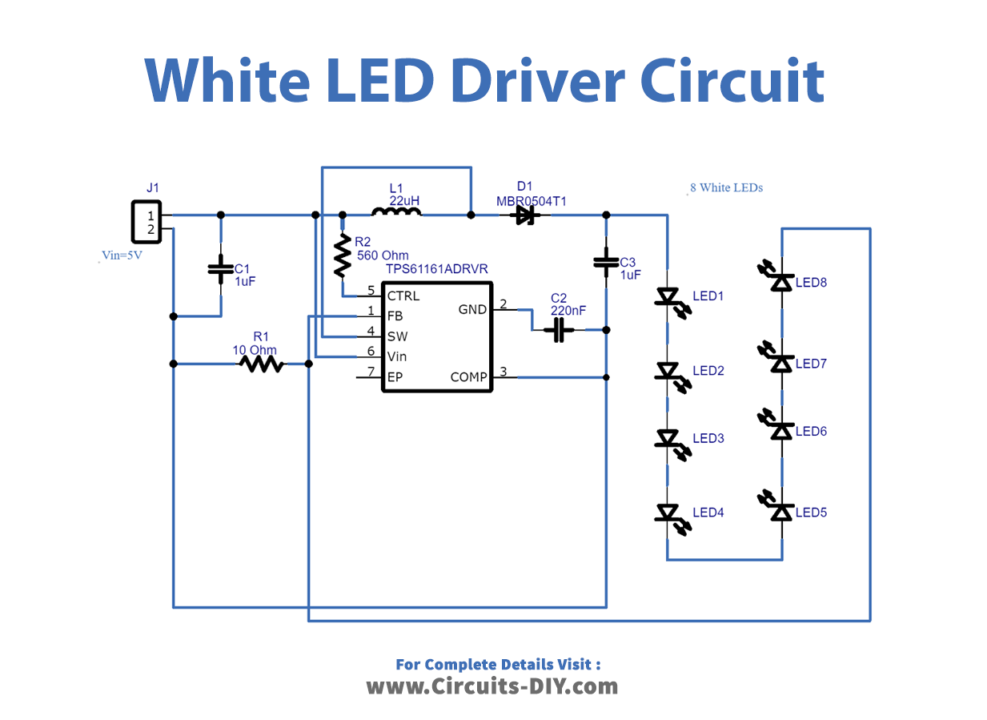
Working Explanation
To make the white LED driver circuit, we have used the TPS61161A IC. input supply is given at pin 6 of the IC, the supply voltage should be between 2.7v to 18 V. We have used a 5V supply for our circuit. Pin 3 is for the ground. Pin 4 is the switching node pin of an IC. We have connected the inductor between the supply pin 6 and this SW pin 4 pin which is also used to sense the output voltage for open LED protection. Pin 5 is the control pin, used to enable or disable the device. Pin 5 is the output of the transconductance error amplifier. The external capacitors are added to this pin. 8 white LEDs are connected in series and are driven by this circuit.
Application and Uses
- To drive the street lights.
- In the indoor lighting circuitry.
- Also, in indicator circuits.
- In emergency light circuits.
- Display circuits, etc.

